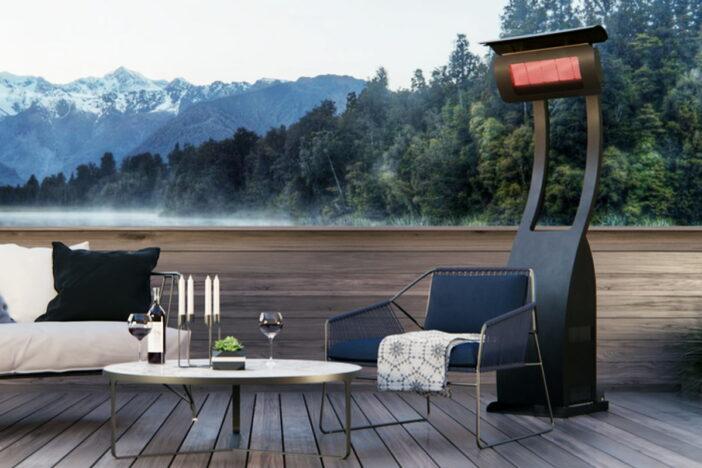
The weather may have turned colder but that doesn’t mean you can’t enjoy spending time on your screened-in porch or hardwood deck year-round. Adding a patio heater is a great way to warm the area so you don’t have to go inside when the sun goes down or temperatures drop. Outdoor heated settings allow you to relax in the fresh air, soak in some vitamin D and sit comfortably for a cozy alfresco dinner despite the chill in the air elsewhere. Unlike the convection heating used indoors, such as furnaces, boilers and HVAC systems that warm the air and then circulate it, outdoor space heaters utilize radiant heating that heats nearby objects and people more efficiently [Hitchings (2007)].
Helpful Article
Read our article Patio Heaters – Radiant vs Convection Heat for more information.
Choose the best patio heater
So, how do you pick the right space heater for your backyard? There are many types of heaters from which to choose. Are they your only choices for heating your outside space? What about fire pits or fireplaces with open flames?
Advantages of outdoor heaters vs traditional fire pits & fireplaces
- Ignition – Fireplaces that burn wood require kindling and attention while most space heaters turn on via a switch or button
- Temperature Control – Fires need rearranging or adding logs to change the temperature while outdoor heaters adjust easily and quickly
- Heat Generation – A fire pit only heats the immediate area whereas a patio heater can efficiently accommodate a larger space
- Air Quality – Wood-burning fire features, unlike heaters, generate a lot of smoke that can irritate eyes and affect people with allergies
- Safety – Wind-blown ashes and sparks can be fire hazards and dangerous for small children and pets, while a deck heater can be hot to the touch
- Aesthetics – Outside heaters tend to be industrial looking and favor function over form, whereas fireplaces and fire pit tables create welcoming focal points of dancing light that suggest coziness and warmth
- Convenience – Firepits, in contrast to heaters, can take a lot of effort to light and clean up
Once you’ve established that one or more patio heaters make the most sense, you need to figure a few things out. This buying guide outlines a number of important criteria that you should understand when investing in these essential heating devices.
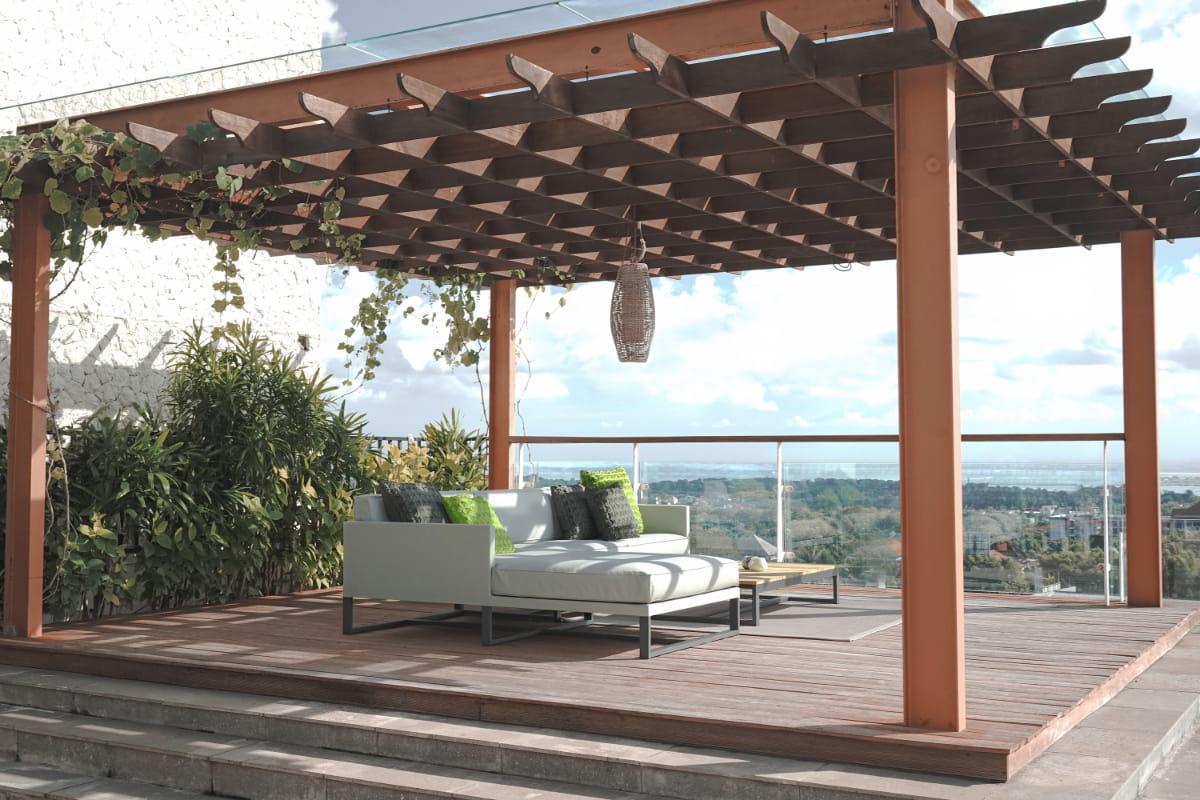
Determine heat requirements
First, calculate how much heat you need to make your outdoor setting more comfortable. Do this before evaluating heaters. The size of your space, its covering and the climate all affect the required heat. Uncovered settings in colder environments will require more heat to warm the same-sized covered area in more temperate zones.
BTU to Watts
British Thermal Units are the standard measurement of heat output. BTU is typically referenced with gas outdoor heaters, while Watt is associated with electric heaters. A BTU represents the thermal energy required to raise the temperature of one pound of water one degree Fahrenheit at sea level. A Watt is a unit of power and 1 Watt = 3.41 BTUs.
While there are several ways to estimate the heat needed for an outdoor space, a simple rule of thumb is multiplying the square feet by twenty BTUs to calculate the required BTUs.
EXAMPLE – A 25 x 30-foot deck is 750 square feet. So, multiply that by 20 and you get 15,000 BTUs. To convert that into Watts, divide 15,000 by 3.41 which equals ~4,400 Watts. If you live in warmer areas, you may need a little less or in cooler areas a little more.
Estimated BTUs & Watts by outdoor space size
| Space in Square Feet | Estimated BTUs | Estimated Watts |
|---|---|---|
| 100-150 ft2 | 2,000-3,000 | 600-900 w |
| 150-250 ft2 | 3,000-5,000 | 900-1,500 w |
| 250-500 ft2 | 5,000-10,000 | 1,500-3,000 w |
| 500-1,000 ft2 | 10,000-20,000 | 3,000-6000 w |
| 1,000-2,000 ft2 | 20,000-40,000 | 6,000-12,000 w |
| 2,000-4,000 ft2 | 40,000-80,000 | 12,000-24,000 w |
Evaluate fuel types
Next, assess which porch heater fuel best meets your needs, budget and personal preference. Each option comes with its own set of benefits and drawbacks in the short and long term. Consider how those characteristics will work in your specific environment before purchasing.
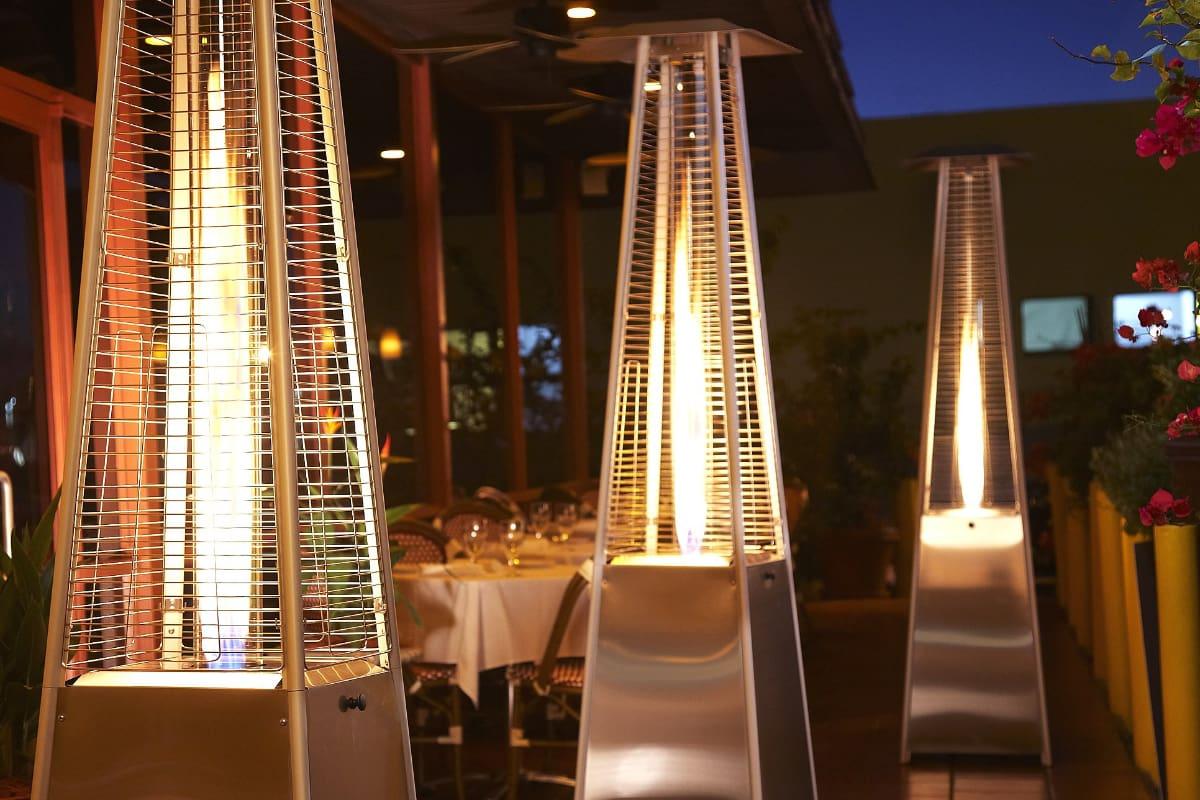
Outdoor Propane Heaters
Liquid propane tanks are commonly connected to backyard barbecues and fire tables. However, they can also be used to fuel gas heaters.
PROS
- Low short-term cost
- Easy set-up
- Warms space quickly
- Portable options
CONS
- Tanks must be stored
- Limited tank capacity
- Need a ventilated uncovered area
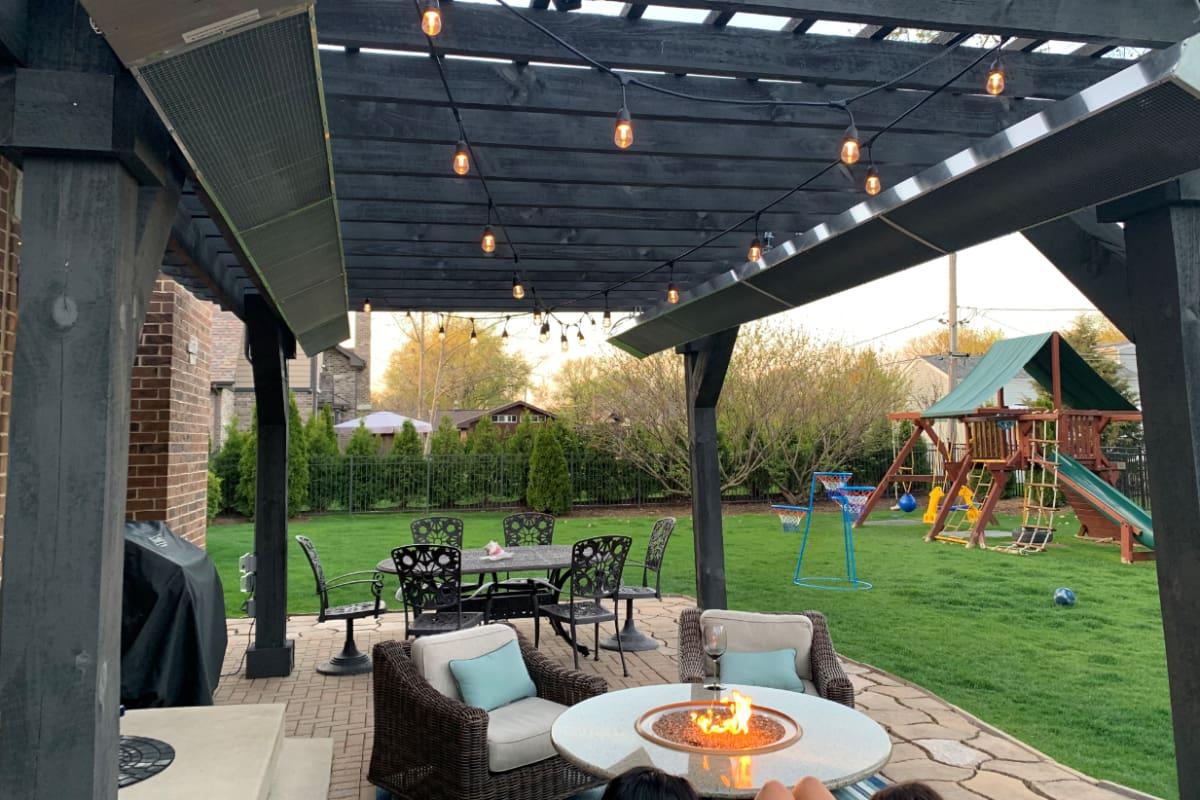
Natural Gas Deck Heaters
Plumbed natural gas often fuels fireplaces and other permanent fire features. It can also be used for deck heaters.
PROS
- Lowest long-term cost
- Never runs out (unlimited capacity)
- Easy to maintain
- More sustainable than propane
CONS
- High short-term cost for installation of gas line
- Not portable
- Strong fumes require ventilation
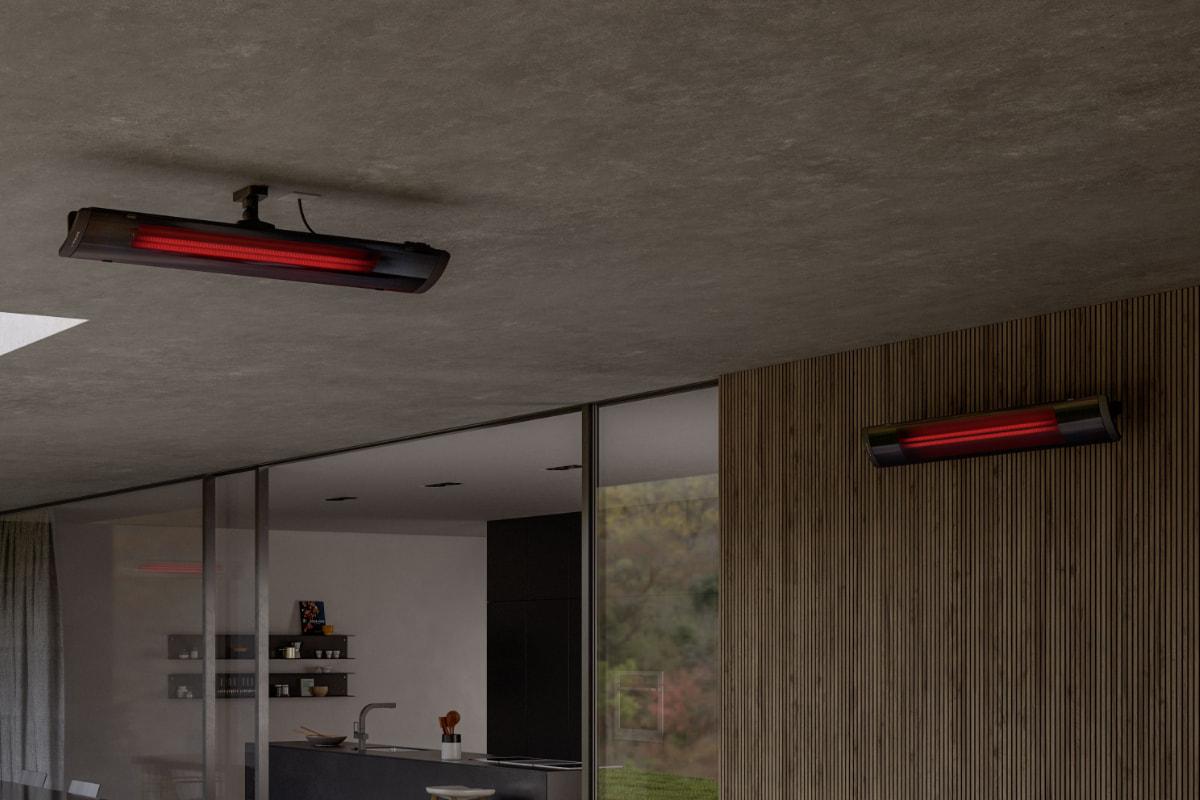
Electric Patio Heaters
Indoor and outdoor space heaters can be powered by electricity.
PROS
- Easy installation
- Relatively portable
- 98% energy efficiency
- Eco-friendly
- No emissions
- Safest option
- Low maintenance
CONS
- Long-term electricity costs can be expensive if utilities are high
- Must be near an electrical outlet
- Take time to warm up
- Generate less heat than alternatives
- More frequent equipment replacement
BUY ELECTRIC HEATERS
Review different design styles of deck heaters
While considering different fuels, factor in how the characteristics of your outdoor setting might impact your design choices. Some outdoor patio lamp heaters work well in large spaces, while others are ideal in small ones. The location of your gas lines and electrical outlets matters as well. Outdoor heating appliances fall into two design categories: those that can be moved and those that can’t after installation.
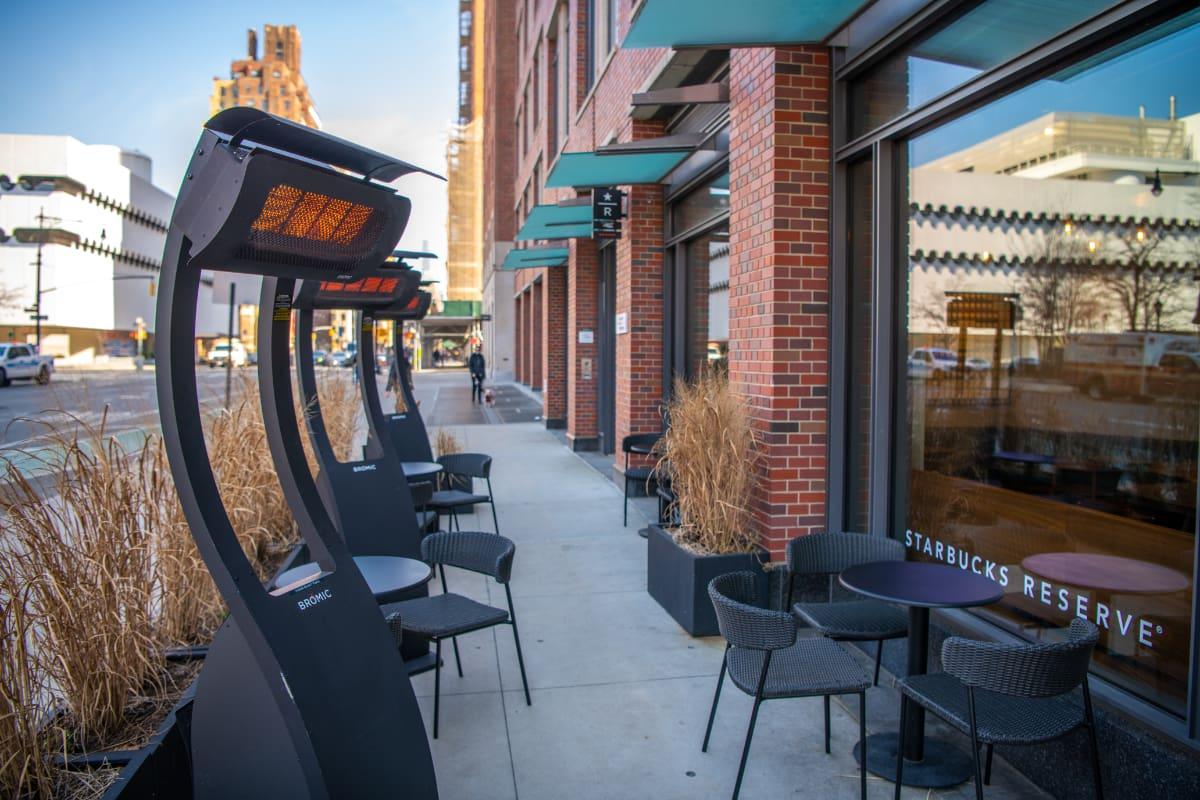
Freestanding – Portable heaters
Mobile heating units vary in their intended placement and degree of portability. Standalone propane heaters have enclosed compartments. They store and conceal their gas tanks and can be placed anywhere. Outdoor electric heaters are limited in their mobility by the outlet position and cord length. A key benefit of these space heaters is the ease of set-up.
Floor or stand-up heaters
Most standing heaters are large (6-8 feet tall) and have wheels. These tower, mushroom or pyramid heaters are often used on restaurant decks and patios. They provide warmth for diners within a 5 to 10-foot radius. Smaller versions of this outdoor heat lamp have squared designs and are placed under tables or to heat smaller spaces.
BUY PORTABLE HEATERS
Tabletop heaters
These small heaters sit on tabletops and often mimic the look of larger floor models. Typically 3 feet or shorter, they’re easy to move and store when not in use.
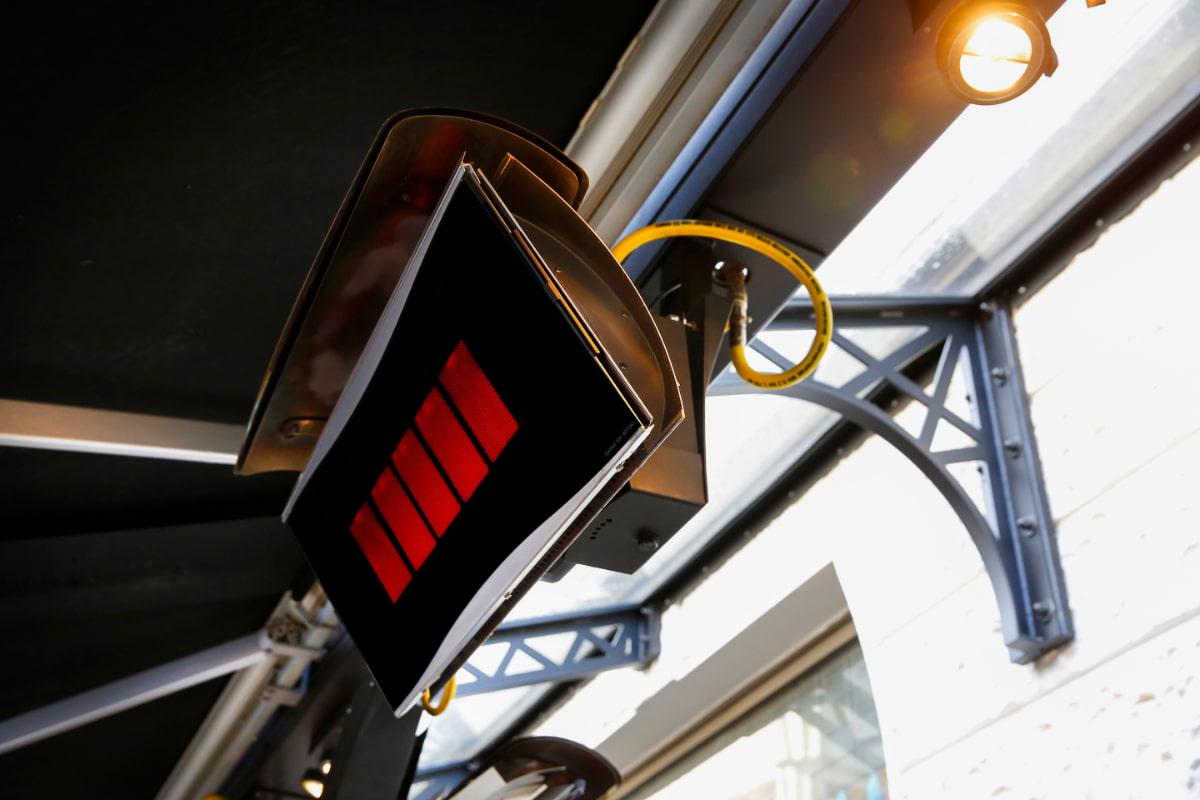
Fixed – Mounted or Hanging Heaters
Immobile outdoor space heaters are permanently attached to walls or ceilings. They’re perfect when there is little floor space. A professional electrician or gas plumber may be required for the installation. Commercial or high-use residential locations often connect to existing propane or natural gas lines. However, most mounted heaters tend to be electrical units. The safest mounted set-ups are far enough away that people cannot burn their hands on hot metal. This type of heater is great when you have static seating and warm the same areas.
BUY MOUNTED HEATERS
Wall Mount Outside Heaters
Uncovered settings with limited floor space (or when you want inconspicuous heating) are perfect for wall-mounted heaters. Gas lines and electrical wiring can be hidden in walls. This enables you to conveniently position the heat without ruining the ambiance. Cross beams of pergolas and gazebos also offer ideal surfaces for mounting as they are high up and less noticeable.
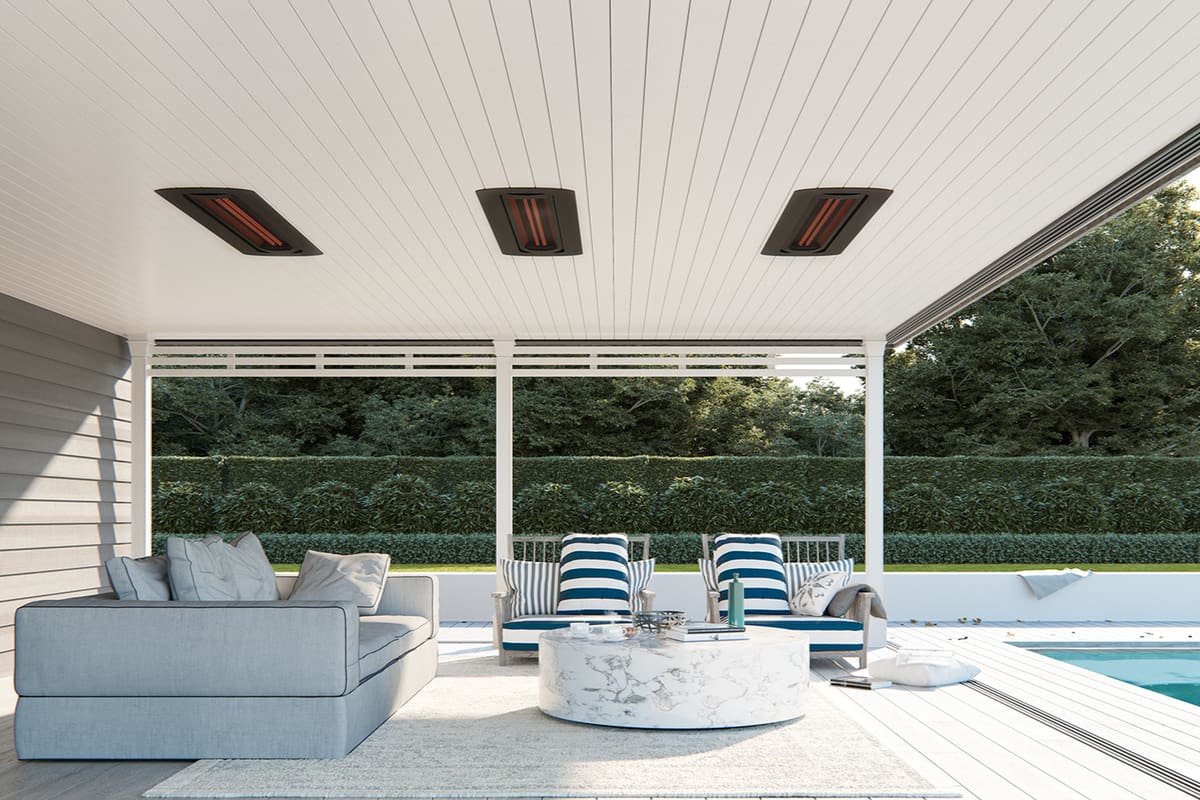
Ceiling Porch Heaters
Mounting an outside heater on the ceiling is sensible when you have limited usable wall space – like a screened-in porch with mesh or glass walls. Some models are affixed to the surface while others are flush-mounted into the ceiling. The latter are less conspicuous and direct attention to the decor. Electric outdoor heaters can be recessed into ceilings while gas versions cannot. Radiant infrared heaters directed toward the floor are much more efficient than heating fans. The latter blows warm air that rises to the ceiling and away from where it’s needed [Roth, Dieckmann & Brodrick (2007)].
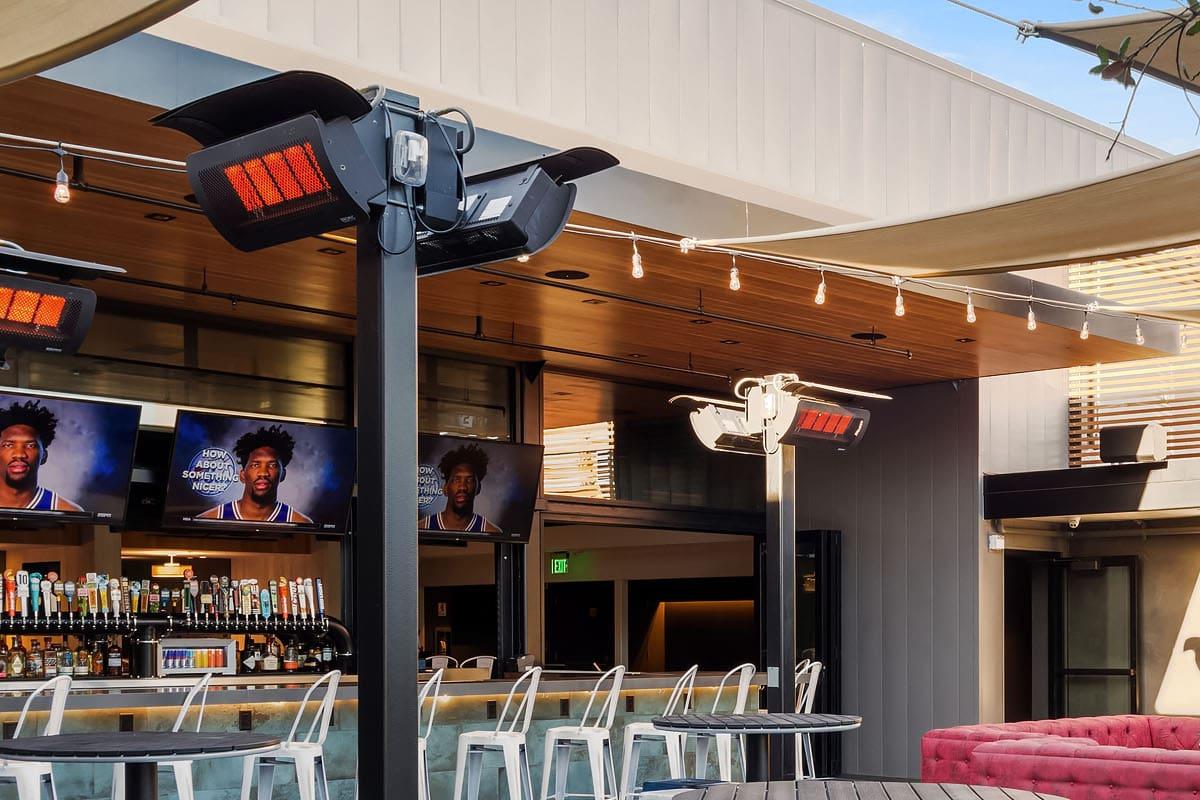
Pole Mount Heaters
In some large commercial spaces, mounting outdoor heaters on poles may be a good solution. This is especially true if there’s high traffic, seating is tightly packed and it’s an open-air setting without a ceiling. Portable heaters might get bumped into, so fixing the heat lamps high up on poles makes a lot of sense.
Hanging Outside Heaters
If you have a high or vaulted ceiling, a hanging heater might be your best bet. Whether dangling by a sturdy cord or held in place by chains or rigid metal tubing, these deck heaters bring warmth closer to where you need it. Gas lines can be a bit unwieldy (and eyesores), so most hanging outdoor heaters are electric-powered.
Safety – you can never be too careful
Keep your deck or porch warm and cozy when the temperature drops to enjoy outdoor dining and lounging year-round. However, it comes with great responsibility. Focused heat and gaseous emissions can threaten health and damage or destroy property.
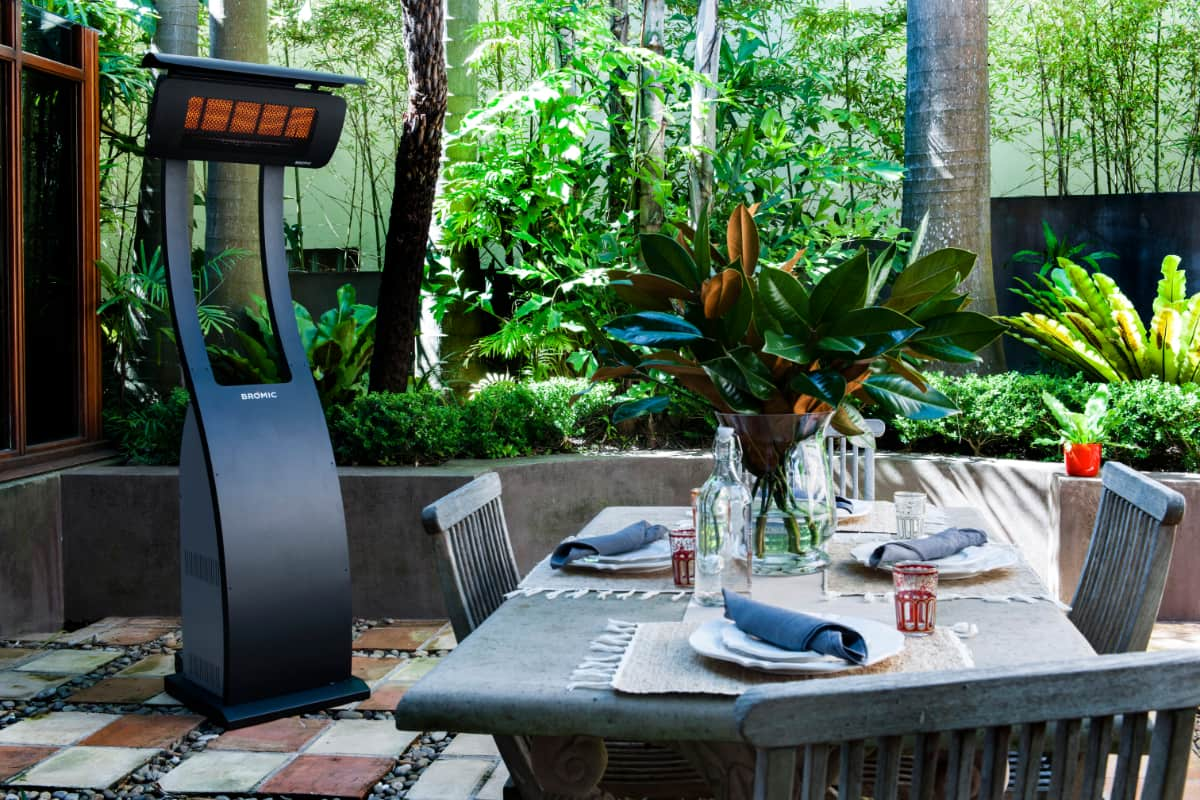
Safe space heater placement
Natural and propane gas heaters produce harmful carbon monoxide. They can only be installed in well-ventilated uncovered or open spaces [Whitmyre & Pandian (2018)]. Infrared deck heaters aside, most heaters are hot to the touch. Place them away from flammable materials such as foliage, fabrics and furniture to minimize fire hazards (at least 3 feet on all sides). If possible, keep them more than an arm’s length from where people (especially children) can reach. Avoid setting floor heaters on uneven surfaces or in high-traffic areas where they can be knocked over.
Outdoor heater safety features
The best deck heaters have many features to make them as safe as possible and qualify for CSA certification or UL approval.
- Accessible On/Off Switch or Remote – Turning the unit on and off or adjusting temperature should not be difficult or put you at risk of touching a hot surface
- Automatic Shutoff – The heater turns off if it gets too hot or becomes a fire hazard
- Tip-Over Switch – If the heater is knocked over, the heating element will automatically turn off (very important for tall standing towers or tabletop designs)
- Cool-Touch Glass – Many heaters have shielding glass tubes or screens to prevent someone from directly touching the heating element and are cooler to the touch
- Protective Cover – Inclement weather, dust and critters can damage heating components and weaken connections if units are not covered when not in use
Maintenance – keep them working safely
Patio heaters are built to handle the elements in mild conditions. However, they maintain performance and last longer if protected from harsh weather. Store portable heaters in dry spaces and cover fixed-mounted units when not using them to minimize exposure. Secure or weigh down tabletop and standing heaters if you reside in areas with windy conditions to prevent them from tipping over. Clean heaters at the beginning and end of every season and follow manufacturer guidelines for the proper process and appropriate cleaners for your unit. Replace damaged parts immediately and check electrical and gas connections regularly.
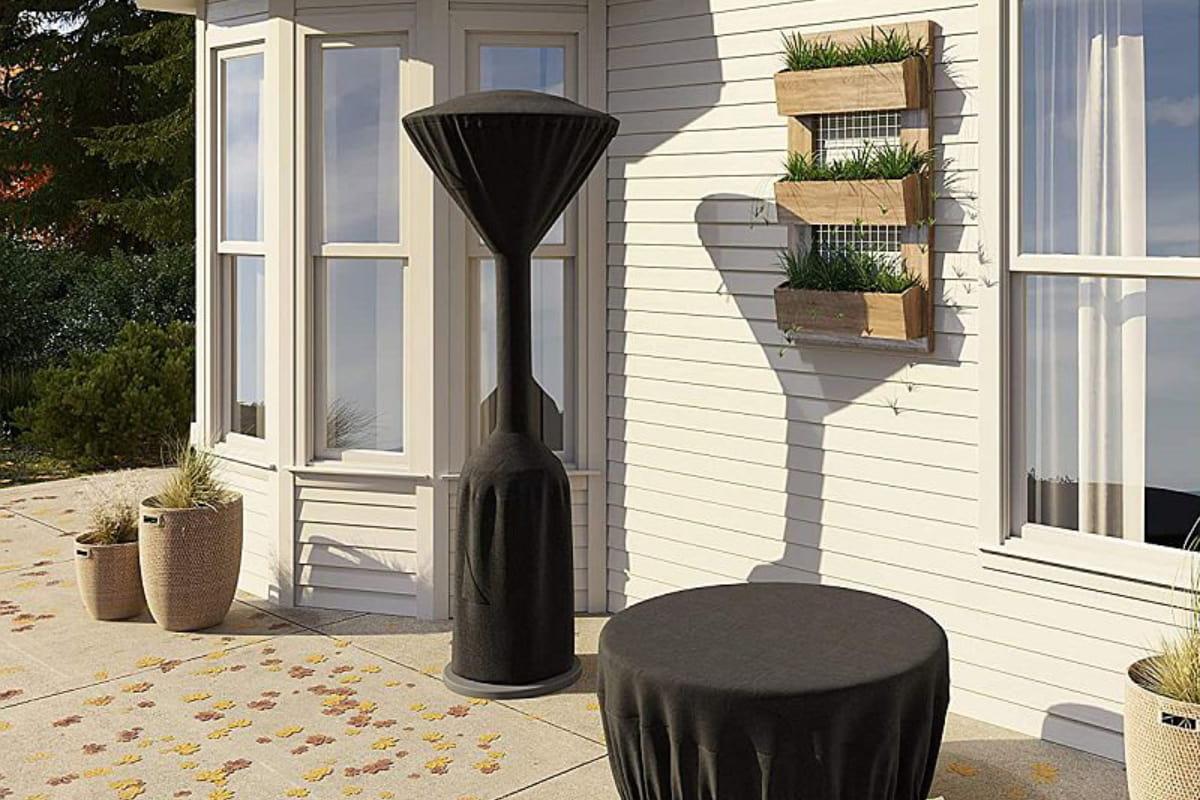
Accessories – enhance the performance
Some outdoor heaters have optional remote controls for turning them on, adjusting the temperature or setting their timing. If you have a commercial alfresco dining area with multiple heaters you may be able to customize the warmth based on each table’s location or patron preference. Directional joints or deflector panels help focus heat where it’s needed.
Select your outdoor radiant heater
After you review these criteria and determine your needs and preferences, you can begin your patio heater search in earnest. The right selection will ensure your outdoor space is warm and welcoming throughout the year.
Frequently Asked Questions – Patio Heaters
What are the best high-end patio heater brands?
Patio heaters vary greatly in price and quality, depending on their heat output, fuel/power source, design and aesthetics. High-performance outdoor heaters may have a sleek look for residential settings or more of an industrial one for commercial installations. Here are a few of the manufacturers of the best quality heaters in the industry:
- Bromic
- Infratech
- Sunpak
- Heatscope
- Kindle Living
- Solaira
- RADtec
- Lynx
- Italkero
- Calcana
- Sunglo
- IR Energy
References
- Hitchings, R. (2007). Geographies of embodied outdoor experience and the arrival of the patio heater. Area, 39(3), 340-348.
- Roth, K., Dieckmann, J., & Brodrick, J. (2007). Infrared radiant heaters. Ashrae Journal, 49(6), 72.
- Whitmyre, G. K., & Pandian, M. D. (2018). Probabilistic assessment of the potential indoor air impacts of vent-free gas heating appliances in energy-efficient homes in the United States. Journal of the Air & Waste Management Association, 68(6), 616-625.

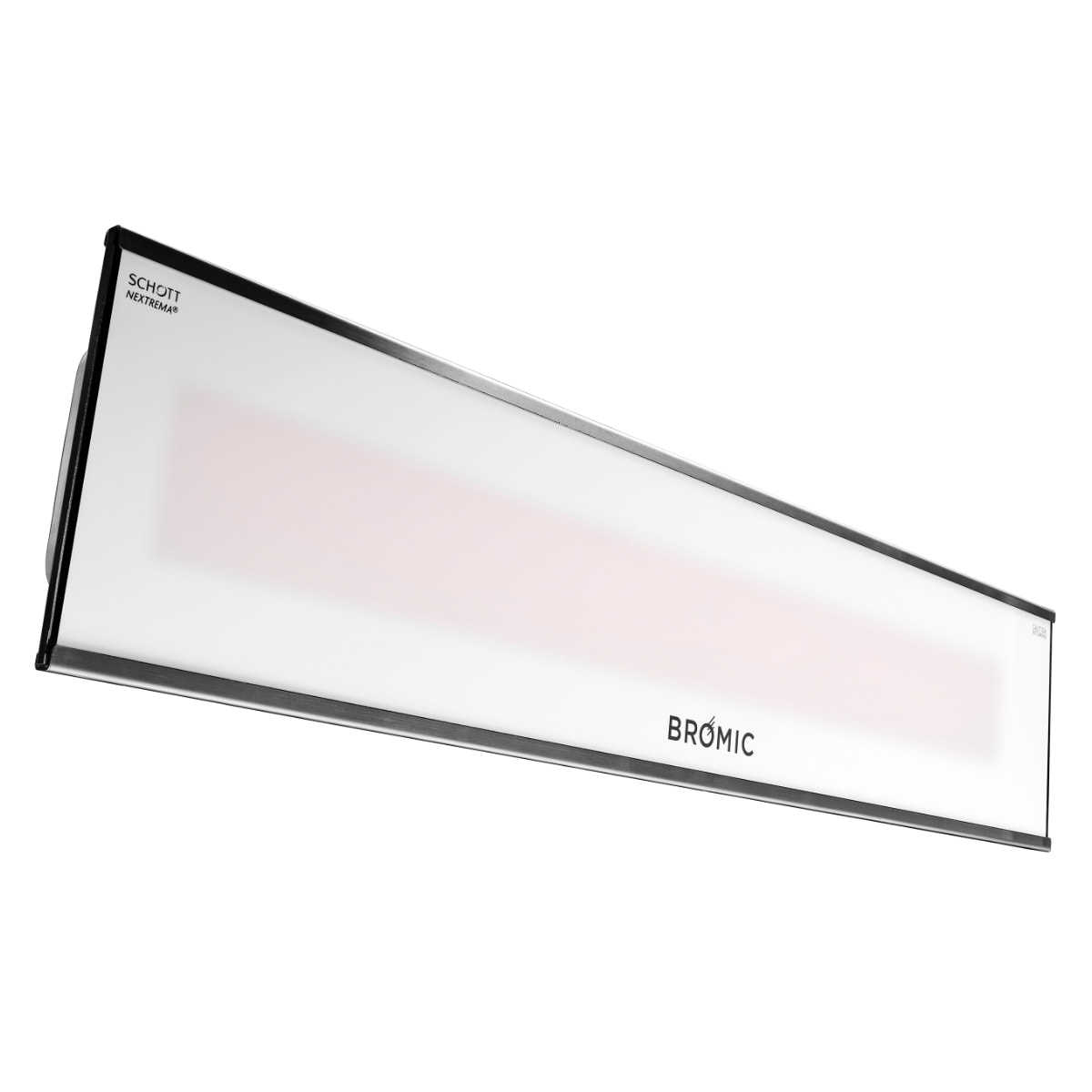
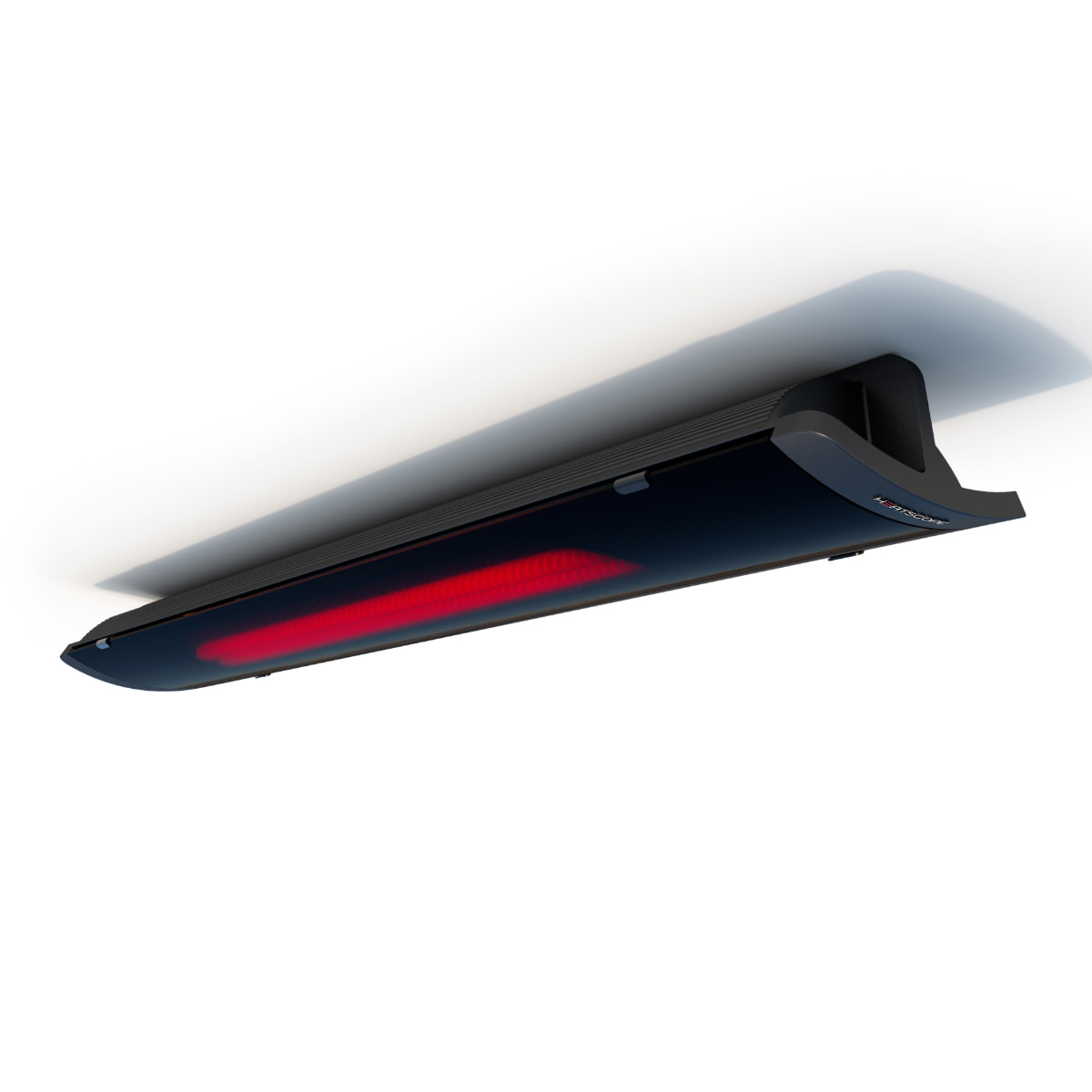
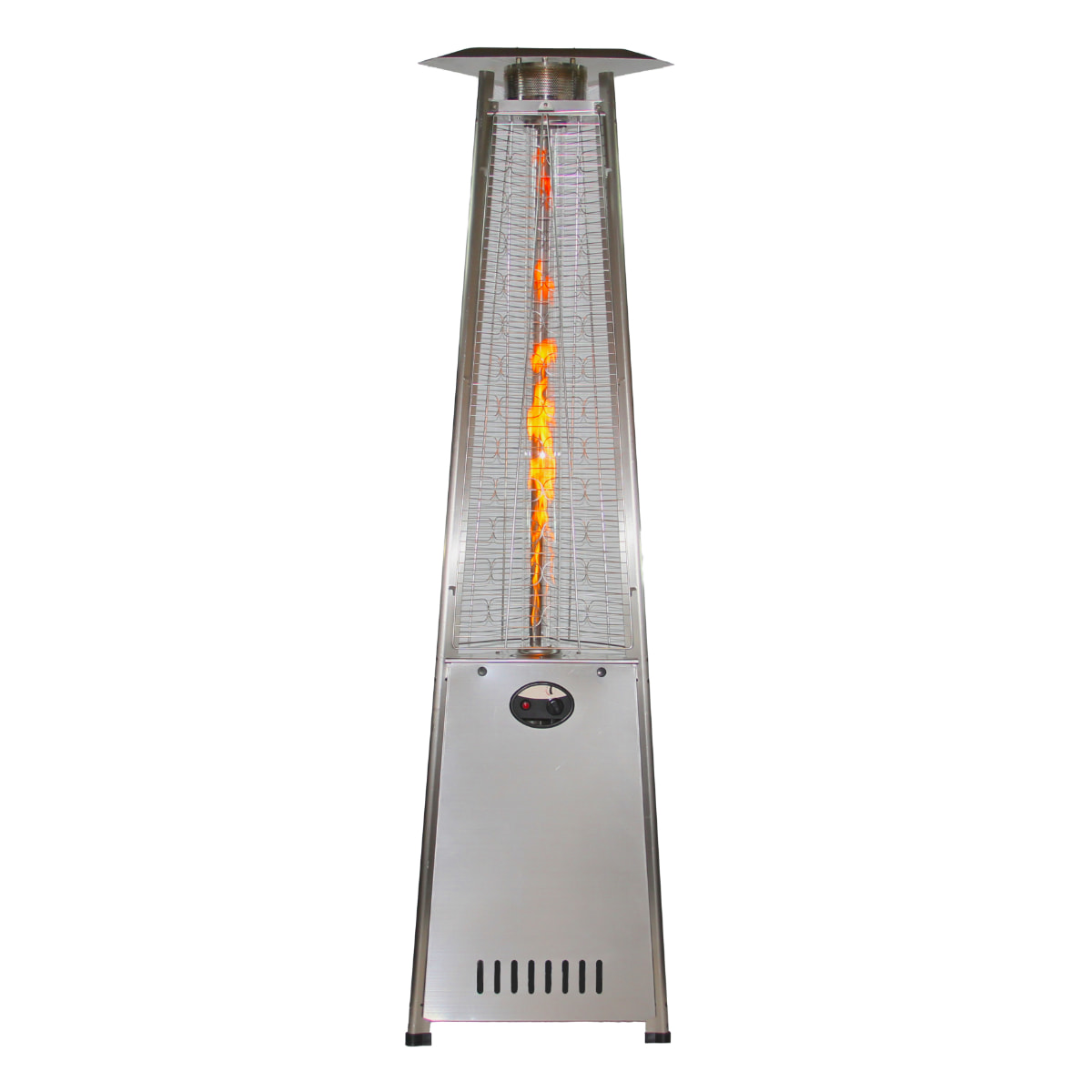
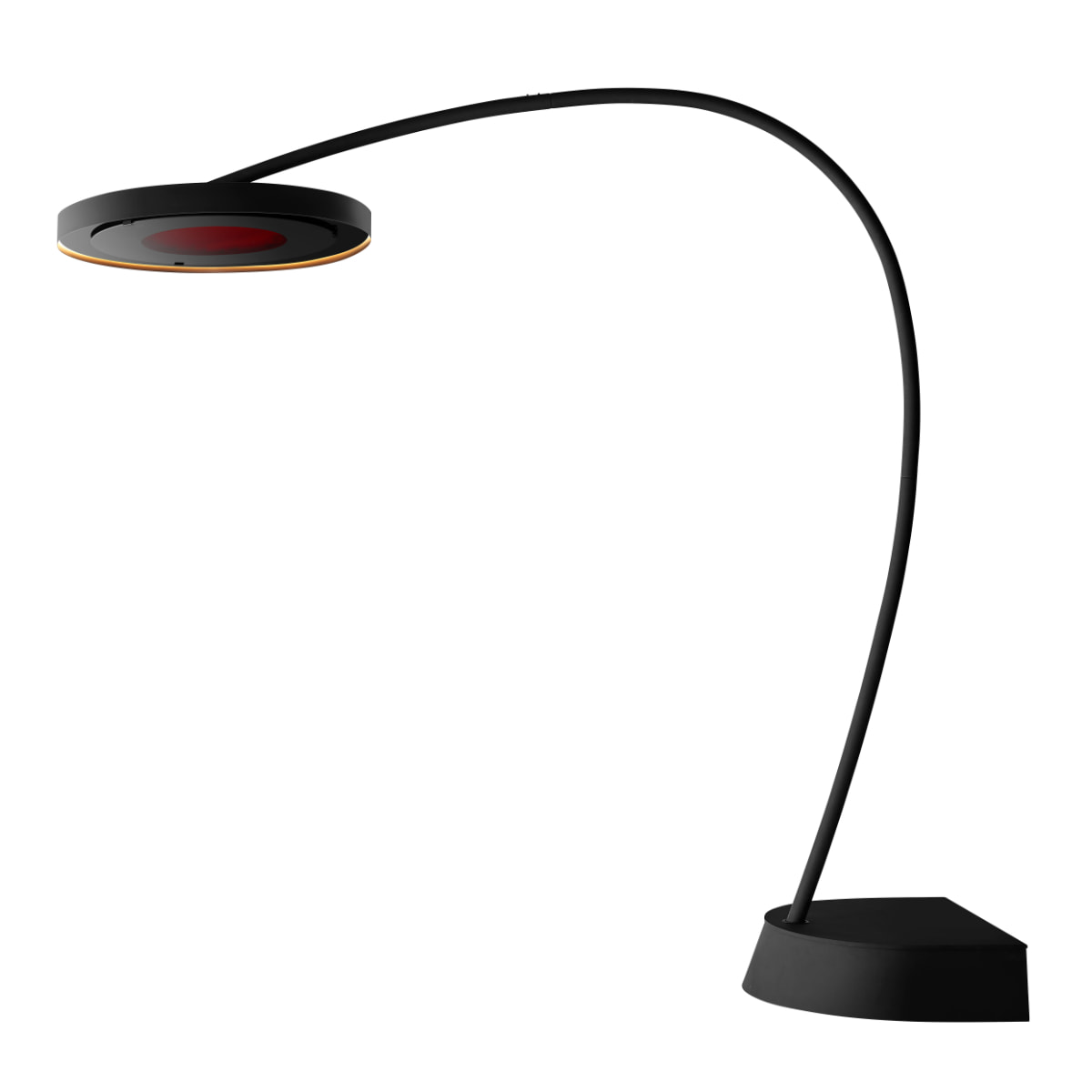
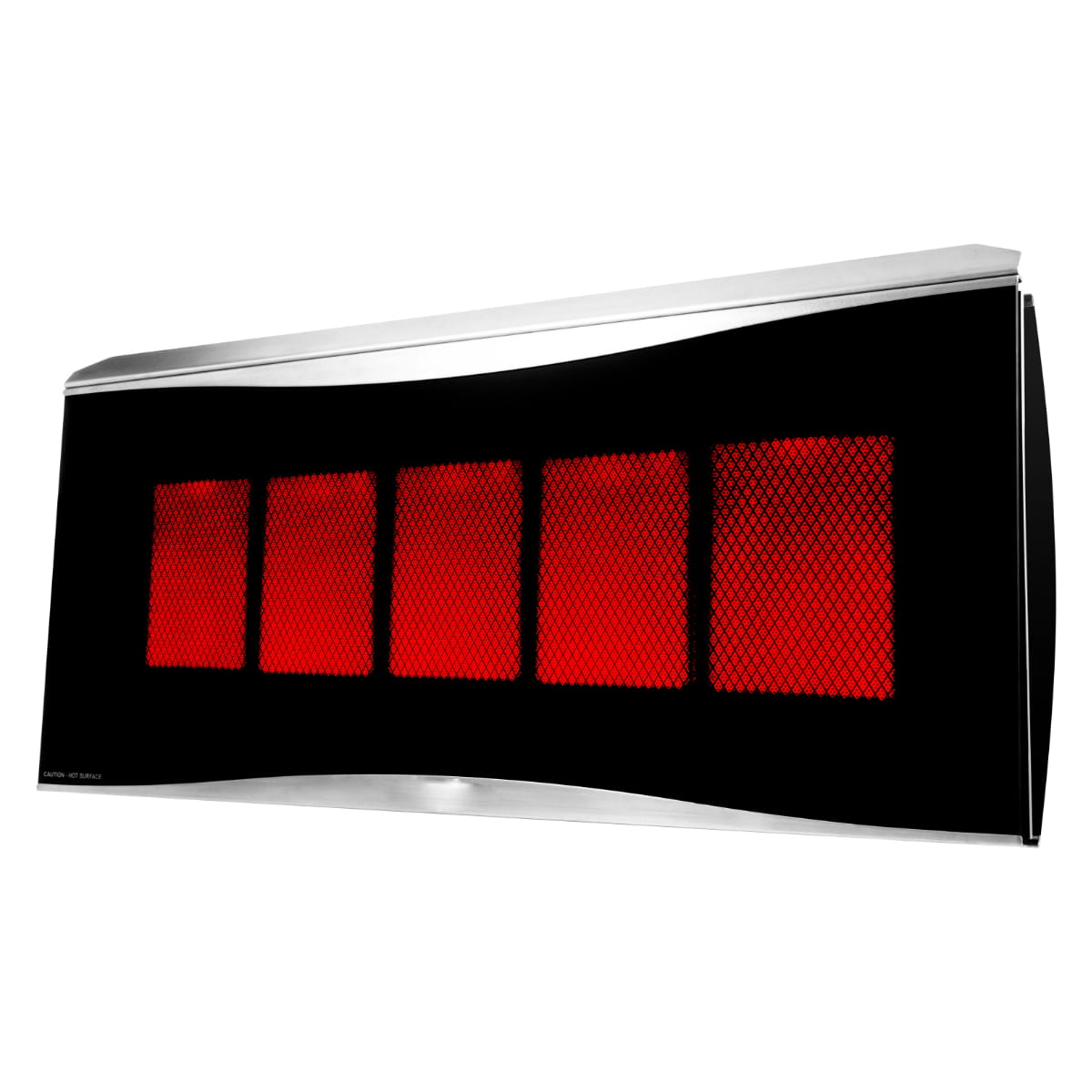
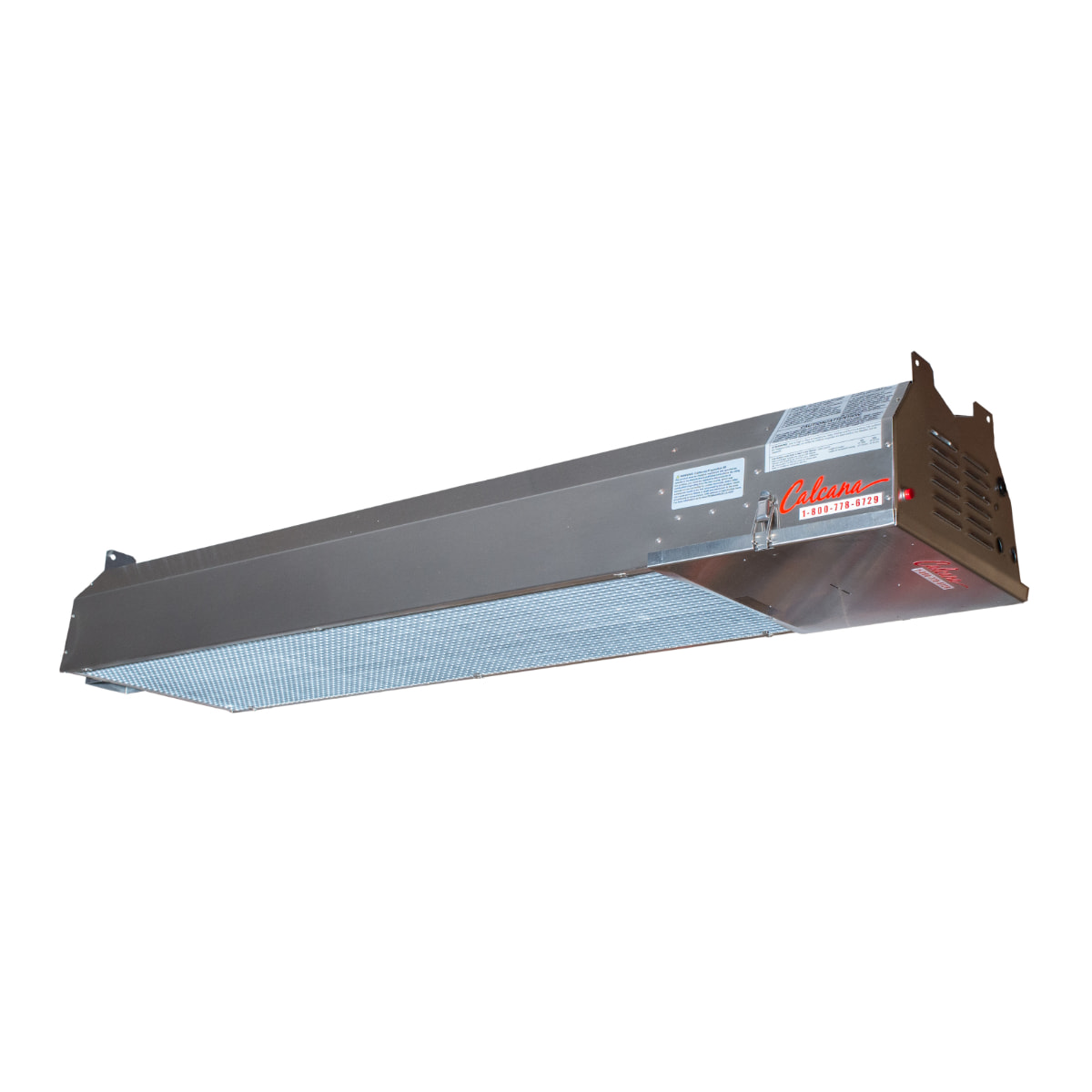




Leave a Reply